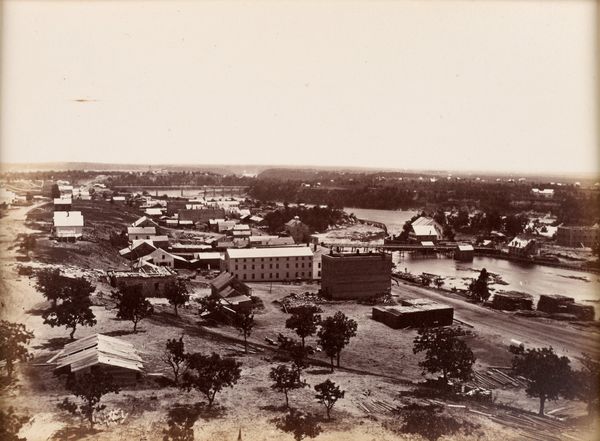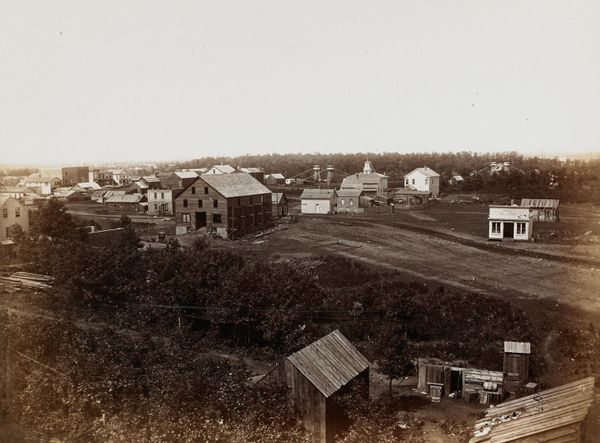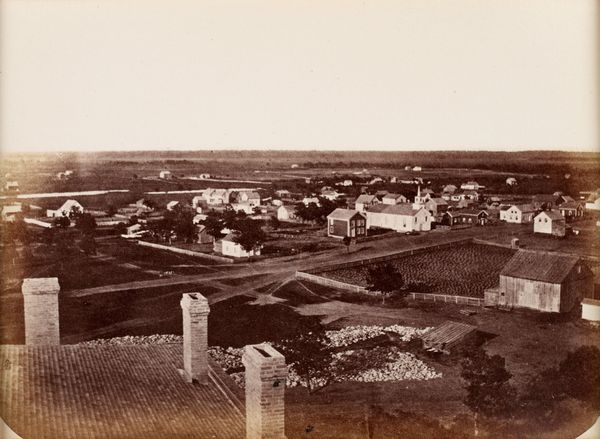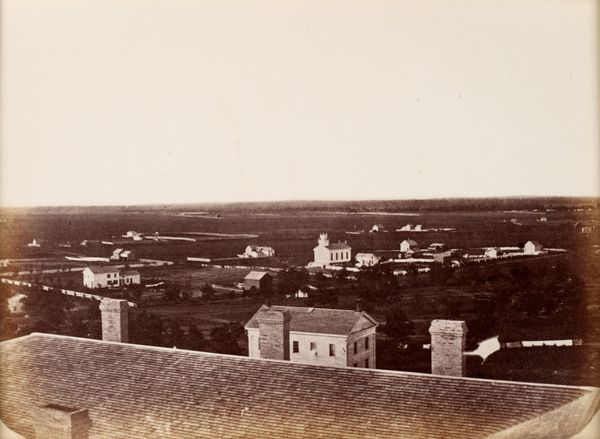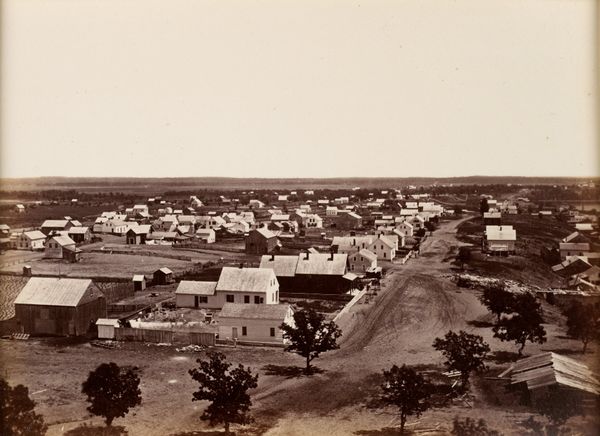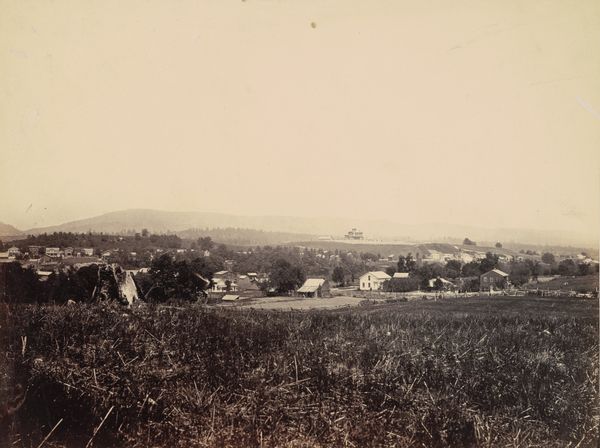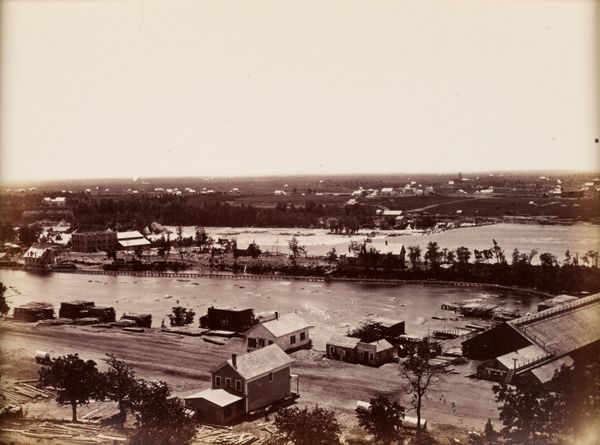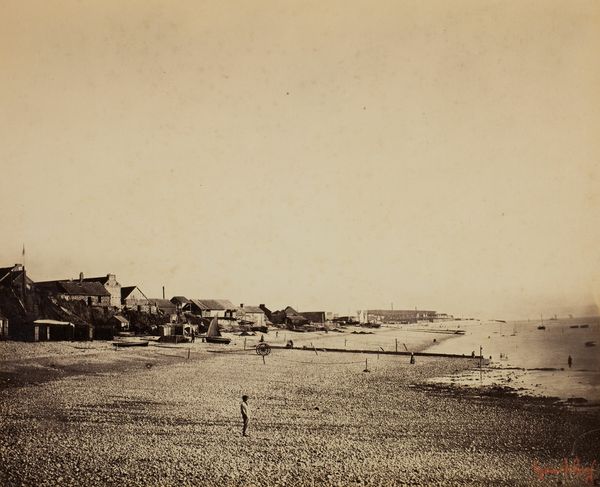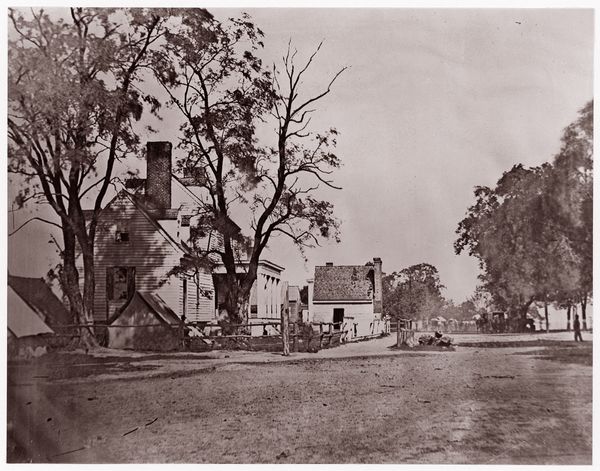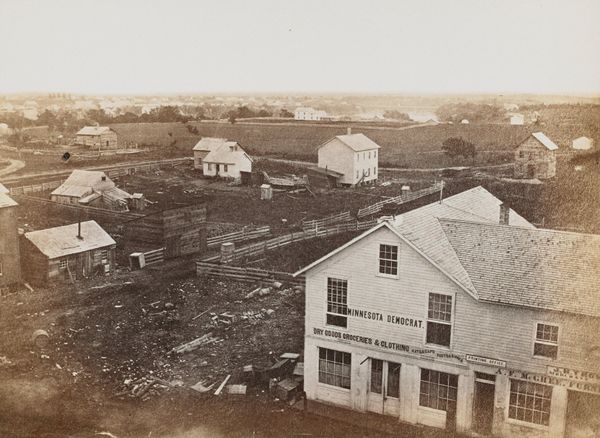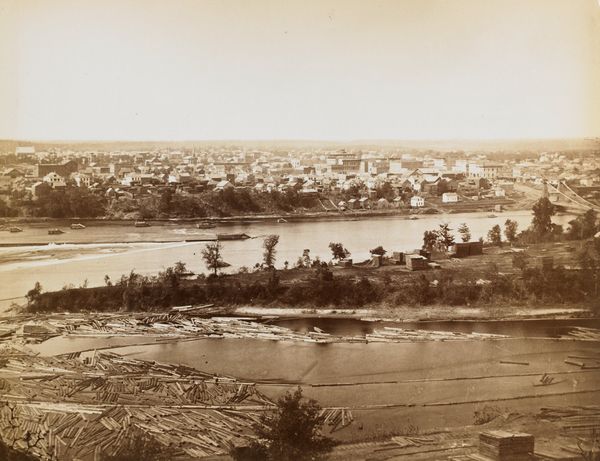
#
excavation photography
#
steam punk
#
abandoned
#
charcoal drawing
#
charcoal art
#
carved into stone
#
gloomy
#
united-states
#
watercolour illustration
#
murky
#
watercolor
Dimensions: 6 x 8 1/8 in. (15.24 x 20.64 cm) (image)9 15/16 x 11 13/16 in. (25.24 x 30 cm) (mount)
Copyright: Public Domain
Curator: "St. Anthony and Minneapolis," dating from 1857 by Benjamin Franklin Upton. An early photograph capturing an expansive view of what would later become Minneapolis. It resides today at the Minneapolis Institute of Art. It feels almost overwhelming with its stark simplicity and vastness. What's your first impression? Editor: It's grainy, and sepia-toned, giving the whole image a somewhat desolate feel. The sharp focus on the stone buildings at the fore draws you in, while the soft blur of the distant city leaves much to the imagination. Curator: I agree, the high vantage point adopted by Upton creates an almost detached view of urban expansion. This photo speaks volumes about the materials used and their availability during that era. Notice the emphasis on local stone for construction—a testament to resourcefulness. Editor: It's important to consider the political context. This image was captured on the cusp of significant changes in the region and wider country. The institutional building, most notably that stone structure, become symbols of permanence and order, anchoring a rapidly changing society. Curator: Absolutely. The very act of capturing this panorama was likely laborious, with the artist carrying and manipulating the equipment required. Early photography demanded expertise in chemistry, optics and even construction with some photographers crafting their own cameras, tripods, and developing solutions. These practical considerations played a defining role in shaping the aesthetic of these pieces. Editor: Precisely. Museums were increasingly influential during this period, curating and shaping the narrative of the growing nation. This image itself becomes part of that curated narrative. The angle and viewpoint frame the settlements and give it almost biblical scale and significance, reinforcing the story of growth and progress. Curator: Ultimately, for me it emphasizes the intrinsic link between artistic representation and the social dynamics surrounding the making of the artwork. Editor: And for me, the way photographs like this simultaneously reflect and mold our understanding of our evolving history is critical to understanding this kind of photograph. Curator: Indeed, Upton’s lens gives us much to consider.
Comments
No comments
Be the first to comment and join the conversation on the ultimate creative platform.
